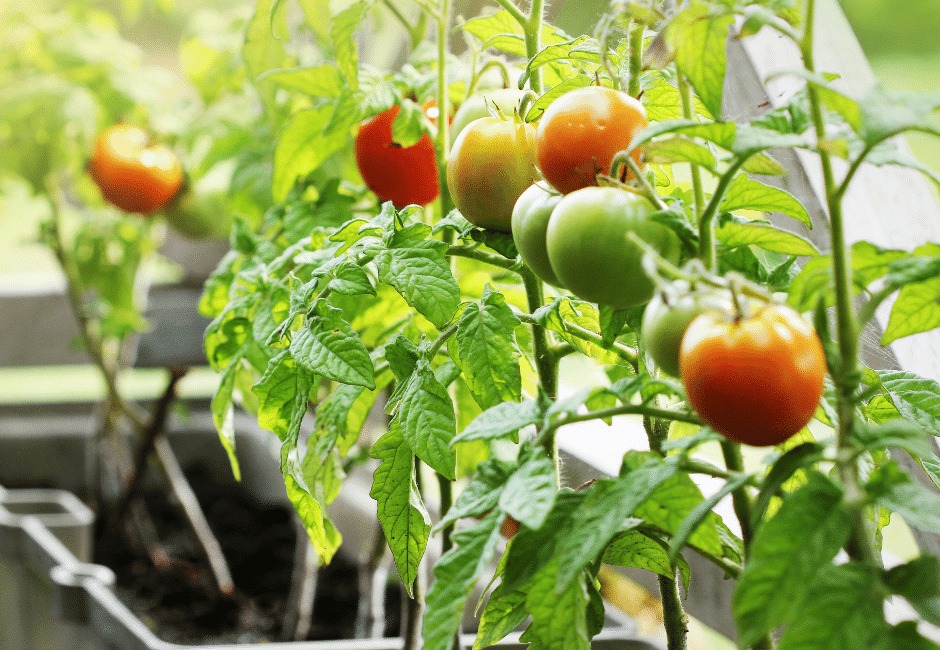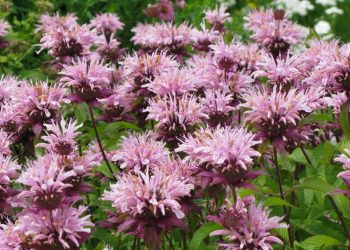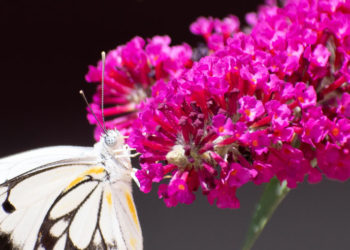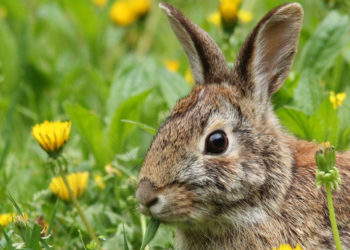Want to try growing tomatoes and peppers in containers? Well we’ve got good news friends because these are some of the best vegetable plants for container growing.
There are so many different reasons that can push us to grow vegetables in containers, like limited space in the yard, too many wild critters roaming unrestricted, and most of all, lack of sun where you need it. This is why containers are such a great solution: they allow you the freedom to put plants where the light, moisture, and protection from damage are optimum.
Peppers and Tomatoes: Perfect for Containers
When it comes to container growing, pepper and tomato plants are excellent choices for patios and decks and in other unconventional places. The first thing you’ll want to ensure is that they’re getting plenty of SUN. Both tomatoes and peppers need full sun (meaning 6-8 hours per day) to grow properly.
Once that is taken care of, here are some other basic rules of thumb:
Make Sure Your Container is Big Enough
Choose your containers with the end goal in mind. These plants are tiny when they’re young, but they’ll grow large as they produce fruit, and the container has to support the weight of the mature plant. If planted directly in the ground, those plants would receive plenty of nutrients from the soil, and the roots would have ample room to spread. So, more soil in the pot means more freedom for the roots to develop into healthy feeding systems for their above-soil plants.
Growing Tomatoes and Peppers in Containers: One Plant Per Pot
For tomatoes and peppers, it’s best to plant one plant per pot. A 12-18 inch pot is optimum for tomatoes and peppers. If you try to grow multiple plants in one pot, it stresses the roots as they’ll fight for limited moisture and nutrients. Another tip? if you’re short on space, go for square over round. Square pots allow you to line several plants in a row, for optimal space efficiency.
Fertilizing Tomatoes and Peppers in Containers
In pots, it’s best to start with a slow-release fertilizer, like Neptune’s Harvest. Feed them with this fish emulsion twice per week for the first 4 weeks. Then switch over to using a ¾ cup of Hyr-BRIX Tomato & Pepper Fertilizer. Do this every 3 weeks throughout the growing season. Make sure to mix the fertilizer into the soil after each application.
If using another fertilizer, it’s imperative to follow the manufacturer’s instructions for feeding plants, as too much fertilizer can burn up plants, and not enough can cause weak plants and non-yielding harvests.
Watering Your Container Plants
We can’t forget the most important ingredient of all: water. Young plants in pots require consistent moisture, meaning that you might be watering them daily. Potted plants can dry up outdoors much faster than those in the ground, so you’ll need to maintain an even moisture level in the soil. It’s important to be vigilant in extreme heat conditions, to make sure your plants don’t wilt from being too dry.
For those of use that lack perfect spots for tomatoes and peppers in the garden, containers give us the freedom to grow as many as we like. So choose your favorite tomato and pepper plants and get growing!





1 Comment
lmaloy
March 14, 2011 at 10:44 amI tried my hand at growing tomatoes on my patio in containers a couple of years ago. The reason was simple–I simply wanted easy access and not a lot of work, like tilling and weeding. The idea of not going any further than my back patio in order to harvest fresh tomatoes was very attractive! But I never thought of doing peppers. Looks like I’ll be buying some new pots this year!
Thanks!!!